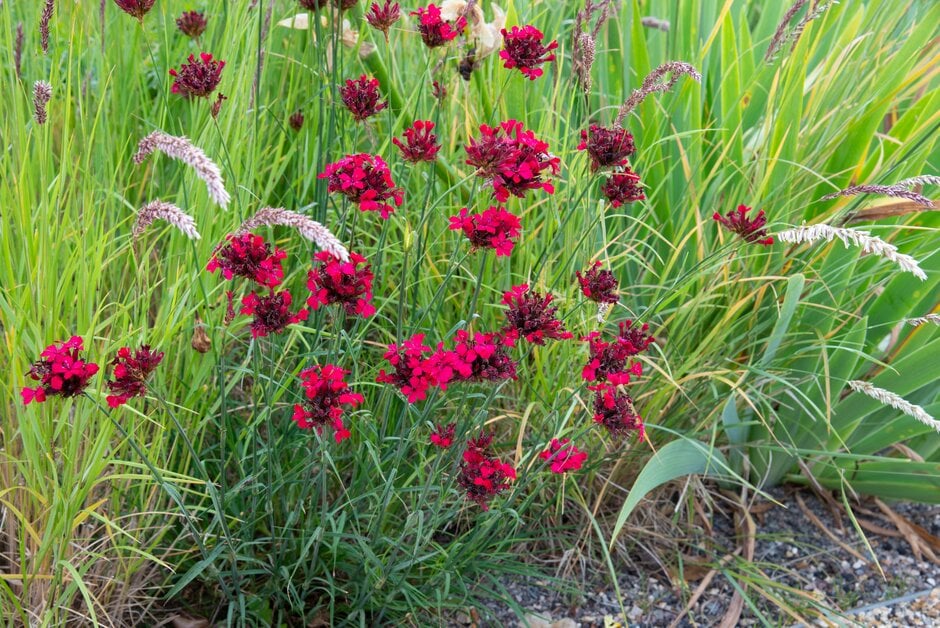Not the plant you're looking for? Search over 300,000 plants
Herbaceous Perennial
Size
Ultimate height
0.5–1 metresTime to ultimate height
2–5 yearsUltimate spread
0.1–0.5 metresGrowing conditions
Chalk
Loam
Sand
Moisture
°Â±ð±ô±ô–d°ù²¹¾±²Ô±ð»åpH
Alkaline, NeutralColour & scent
| Stem | Flower | Foliage | Fruit | |
| Spring | Blue Green | |||
|---|---|---|---|---|
| Summer | Red | Blue Green | ||
| Autumn | Blue Green | |||
| Winter | Blue Green |
Position
- Full sun
Aspect
South–facing or °Â±ð²õ³Ù–f²¹³¦¾±²Ô²µ
Exposure
Exposed or Sheltered Hardiness
H5Botanical details
- Family
- Caryophyllaceae
- Native to GB / Ireland
- No
- Foliage
- Evergreen
- Habit
- Clump forming
- Potentially harmful
- Humans/Pets: Skin allergen, wear gloves and other protective equipment when handling. For further information and contact numbers regarding pets, see the HTA guide to potentially harmful plants
- Genus
Dianthus can be annuals, evergreen perennials or subshrubs with narrow, often greyish leaves and showy flowers that are frequently fragrant
- Name status
Correct
- Plant range
- SE Europe to Iran
How to grow
Cultivation
Grow in a well-drained, neutral to alkaline soil in full sun. Will not tolerate winter wet
Propagation
Propagate by seed or by softwood cuttings of non-flowering shoots in summer
Suggested planting locations and garden types
- City and courtyard gardens
- Coastal
- Cottage and informal garden
- Gravel garden
- Patio and container plants
- Flower borders and beds
Pruning
Deadhead regularly to prolong flowering and trim overwintered shoots in spring to keep tidy
Pests
Diseases
May be susceptible to powdery mildews, a rust, a virus and fusarium wilt
Dianthus cruentus
blood pink
at the RHS plant Shop
Get involved
91µ¼º½ is the UK’s leading gardening charity. We aim to enrich everyone’s life through plants, and make the UK a greener and more beautiful place.
